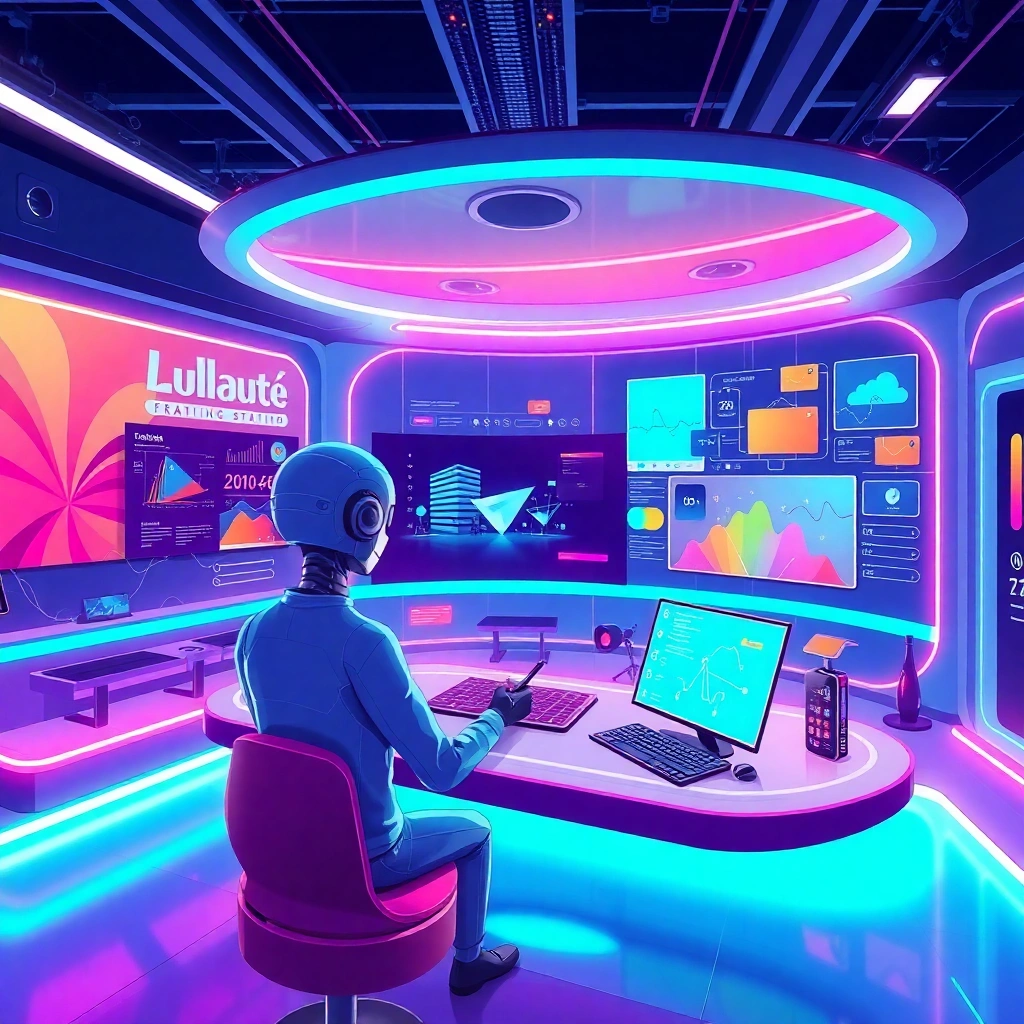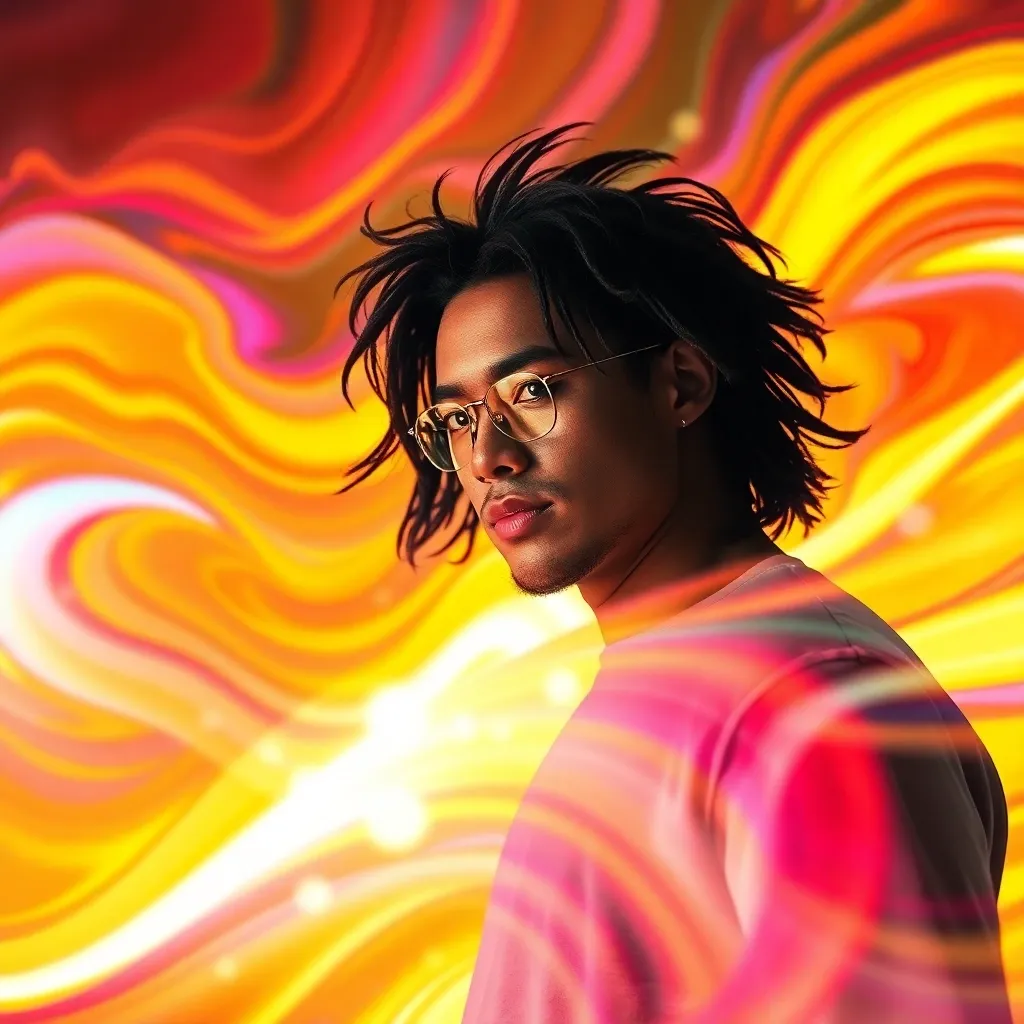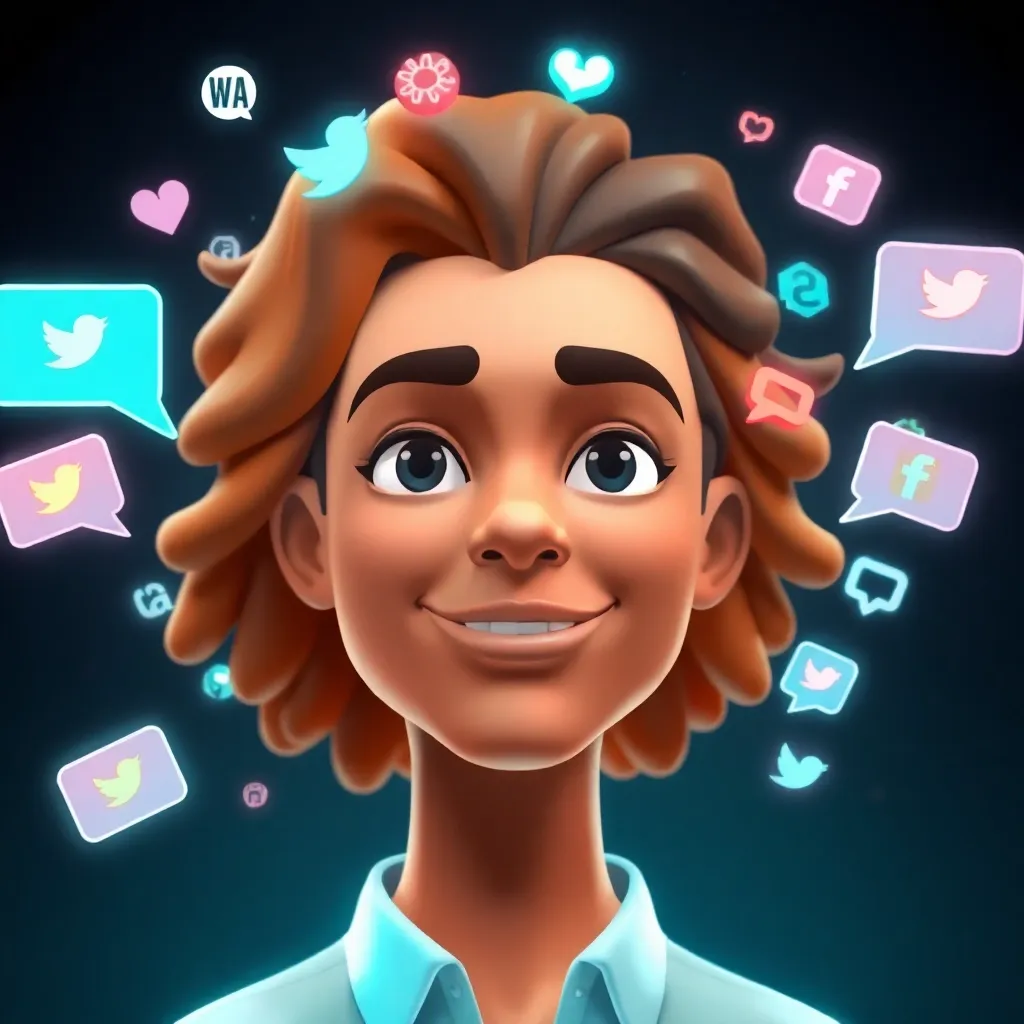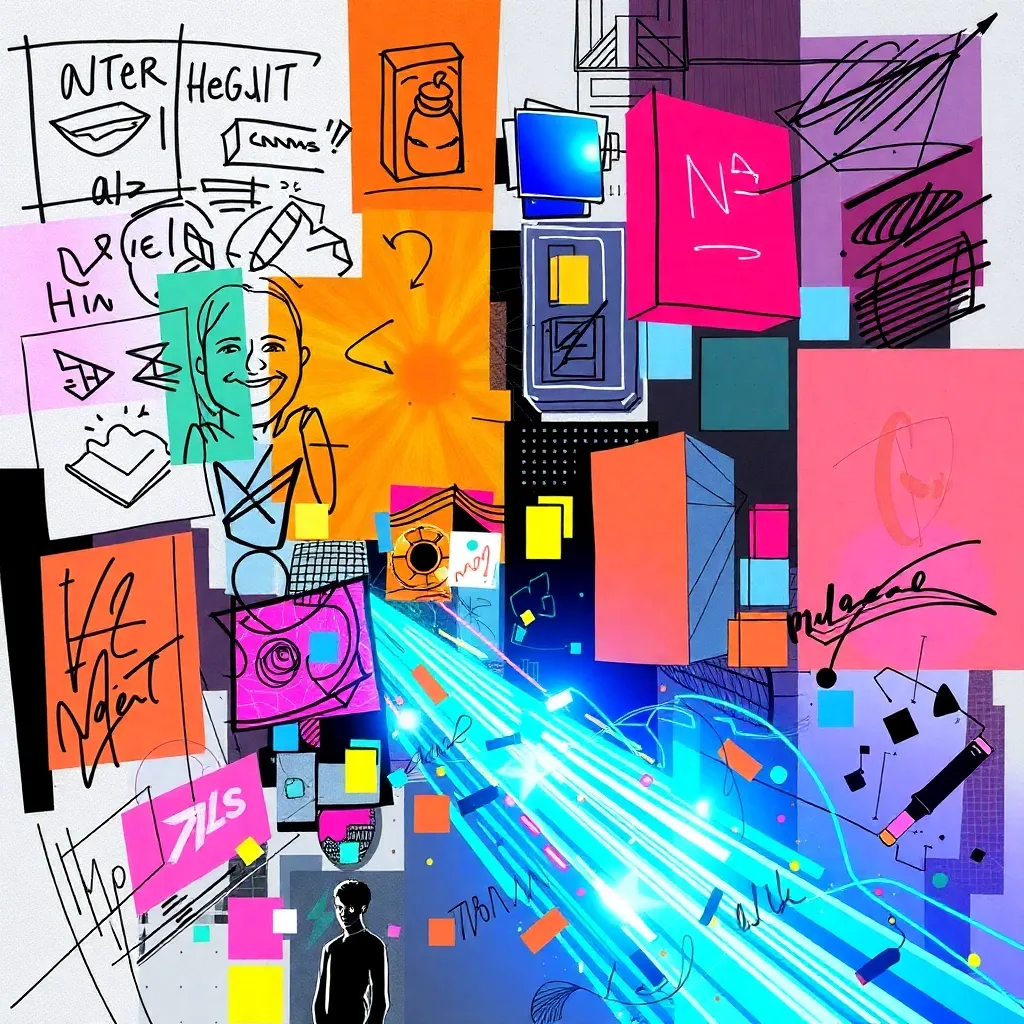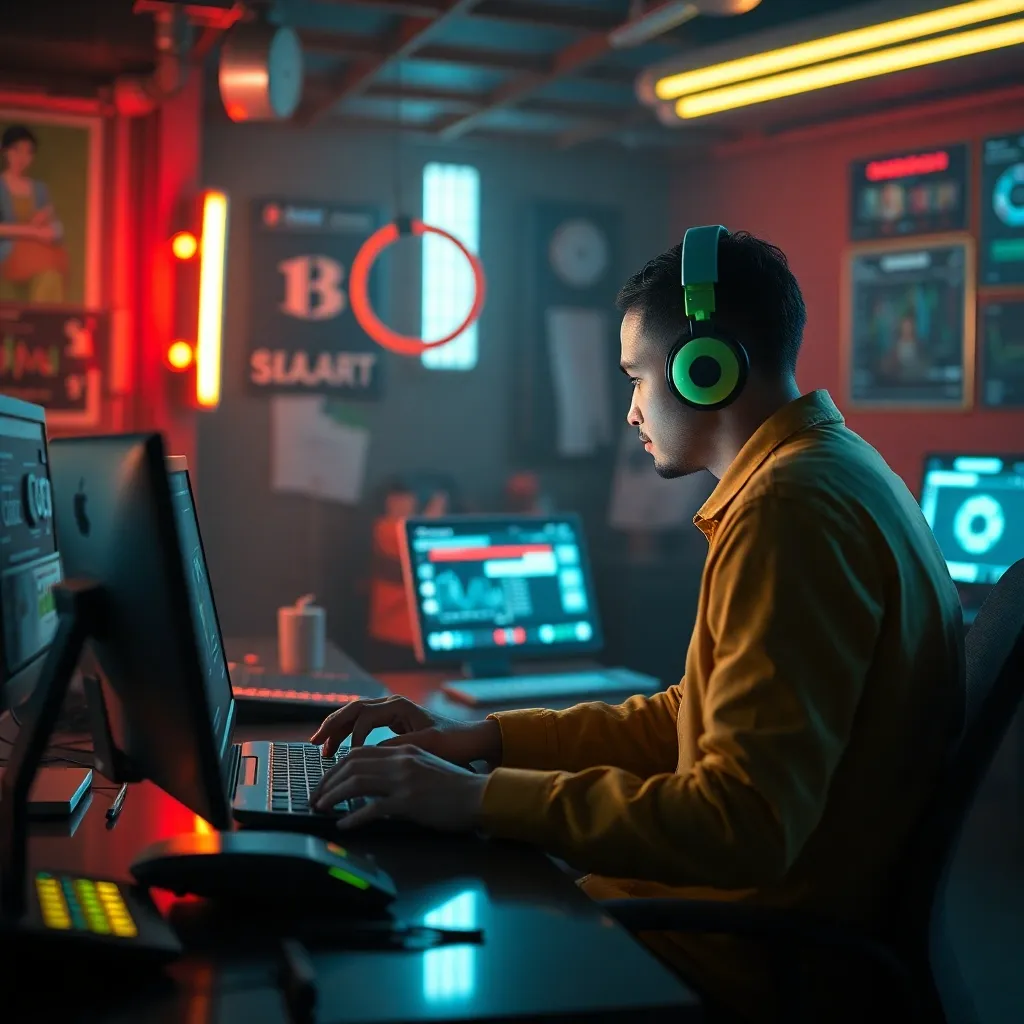Engineer Power of AI Branding: Building Unique Brand Identities
- Introduction: Why AI Branding Is the Next Competitive Edge
- The New Brand Frontier: What AI Branding Really Means
- Strategy Stack: The 4 Pillars of AI-Driven Brand Development
- 12 AI Branding Strategies for Building Unique Brand Identities
- Strategy 1: Positioning by Contradiction
- Strategy 2: Voice Archetype Synthesis
- Strategy 3: Persona Triangulation
- Strategy 4: Signature Visual Systems
- Strategy 5: Story Engine Frameworks
- Strategy 6: Message-Market Fit Tests
- Strategy 7: Multimodal Sequencing
- Strategy 8: SEO-Led Authority Building
- Strategy 9: Localization and Cultural Fit
- Strategy 10: Human-in-the-Loop Governance
- Strategy 11: Performance Craft
- Strategy 12: Creators and Avatars
- From Strategy to Output: A Practical AI Branding Workflow
- Branding Tools for Marketers: What to Look For
- How Mad Bot Art Powers AI Branding Strategies End-to-End
- Enhancing Brand Recognition with Multimodal Consistency
- Effective Brand Positioning: Turning Data into Narrative
- AI for Brand Differentiation: From Feature Parity to Category Narrative
- Memorable Brand Creation: Narrative Devices That Stick
- Governance: Scale Safely Without Sacrificing Originality
- KPIs and Measurement: Proving Impact from Strategy to Spend
- Prompt Playbook: Ready-to-Use Patterns
- Sample Use Cases Across Industries
- 90-Day Implementation Roadmap
- Common Pitfalls and How to Avoid Them
- Why Mad Bot Art for Branding in a Competitive Market
- Conclusion: Turn Intelligence into Identity

Engineer Power of AI Branding: Building Unique Brand Identities
Discover how AI can help in building unique and memorable brand identities in a competitive market.
Introduction: Why AI Branding Is the Next Competitive Edge
In today’s saturated digital economy, the brands that rise above the noise are those that move faster, sound clearer, and show up consistently across every medium. The difference increasingly comes down to how effectively you use AI branding strategies. Strategic branding with AI isn’t just about faster content production; it’s about building unique brand identities rooted in data, creativity, and repeatable systems. The right approach leads to enhancing brand recognition, sharpening effective brand positioning, and producing memorable brand creation at scale.
This article unpacks a complete playbook for AI-driven brand development—from research and positioning to asset production, governance, and measurement. You’ll learn the most impactful AI branding strategies, how to operationalize them, and how a unified platform like Mad Bot Art helps marketers and creative teams turn intelligent strategy into on-brand, revenue-driving output.
If you’re serious about branding in a competitive market, it’s time to evolve beyond scattered tools and isolated experiments. AI for brand differentiation begins when you align strategy, workflows, and governance in one place.
The New Brand Frontier: What AI Branding Really Means
Artificial intelligence is redefining brand building at both strategic and operational levels. At its core, AI branding integrates:
- Market intelligence: Rapidly analyze competitors, audience segments, sentiment, and channel dynamics.
- Creative systems: Translate brand voice and visual language into reusable instructions, presets, and style rules.
- Multimodal execution: Generate on-brand text, images, video, audio, and avatars—ready for campaign distribution.
- Governance and iteration: Track performance and enforce quality standards while learning from every output.
The result is an AI-driven brand development engine that marries positioning to production. This is the foundation for building unique brand identities that are defensible, scalable, and recognizable across touchpoints.
Strategy Stack: The 4 Pillars of AI-Driven Brand Development
1) Insights and Positioning
- Collect structured inputs (audience data, competitor benchmarks, channel patterns).
- Use AI to extract themes, gaps, and opportunities for effective brand positioning.
- Validate hypotheses with experiments and quick-turn creative tests.
2) Brand Systemization
- Convert brand voice, narrative, and design into formalized instructions.
- Build style guides, attribute sliders (tone, energy, complexity), and visual presets.
- Create “why-us” messaging maps that express AI for brand differentiation clearly and consistently.
3) Multimodal Production
- Accelerate creation of copy, visuals, video, audio, and interactive assets.
- Enhance consistency with prompt libraries and curated model presets.
- Produce localizations and channel-native variants while protecting brand integrity.
4) Governance and Growth
- Establish approvals, analytics, and audit trails across teams.
- Track spend, usage, and ROI by account or campaign.
- Iterate based on measurable outcomes to systematically enhance brand recognition.
12 AI Branding Strategies for Building Unique Brand Identities
Use these practical AI branding strategies to create impact fast:
Strategy 1: Positioning by Contradiction
- Analyze category narratives via AI-driven clustering.
- Identify implicit assumptions your competitors share.
- Construct a positioning that “zigs” where the market “zags.”
Outcome: Effective brand positioning that stands out in a sea of sameness.
Strategy 2: Voice Archetype Synthesis
- Feed examples of brand-approved content and competitor messaging to an LLM.
- Have AI propose three voice archetypes that match your brand’s ethos.
- Stress-test each archetype with use cases: thought leadership, product pages, support scripts.
Outcome: Strategic branding with AI that yields a codified, scalable voice.
Strategy 3: Persona Triangulation
- Combine CRM data, social listening, and on-site behaviors.
- Ask AI to generate distinct persona narratives, pain points, and channel preferences.
- Align your editorial calendar and ad storytelling with the top-priority persona needs.
Outcome: AI-driven brand development grounded in actual audience signals.
Strategy 4: Signature Visual Systems
- Use style transfer plus tightly controlled presets to define a cohesive look.
- Create rule-based templates (color harmonies, type pairings, motion cues).
- Lock brand kits and share them across teams to ensure consistent outputs.
Outcome: Enhancing brand recognition through unmistakable visual identity.
Strategy 5: Story Engine Frameworks
- Build modular storytelling structures (hook, proof, demo, objection, CTA).
- Have AI propose multiple versions with brand voice constraints.
- Deploy across formats—blogs, carousels, reels, and product videos.
Outcome: Memorable brand creation through narrative repetition without creative fatigue.
Strategy 6: Message-Market Fit Tests
- Generate value propositions and taglines targeted to different audience segments.
- Run micro-campaigns; measure lifts in CTR, time on page, and conversion.
- Use AI to analyze winners and feed back into the message library.
Outcome: Data-backed AI for brand differentiation that compounds over time.
Strategy 7: Multimodal Sequencing
- Orchestrate interlinked assets (e.g., teaser video → long-form article → interactive demo).
- Leverage AI to adapt a central narrative to each medium and channel.
- Measure sequence-specific attribution to guide future creative flows.
Outcome: Strategic branding with AI that turns campaigns into cohesive experiences.
Strategy 8: SEO-Led Authority Building
- Use AI to perform competitor analysis, topic clustering, and content gap discovery.
- Draft and refine articles that meet searcher intent and show thought leadership.
- Link assets across the funnel to accelerate brand authority and demand capture.
Outcome: Branding in a competitive market supported by sustained organic growth.
Strategy 9: Localization and Cultural Fit
- Use AI to localize not just language, but tone, symbols, and references.
- Build regional variants of campaigns while preserving brand identity.
- Employ regional approvals to avoid missteps.
Outcome: Building unique brand identities that resonate globally.
Strategy 10: Human-in-the-Loop Governance
- Define approval thresholds by asset type and risk level.
- Use AI to flag off-brand or low-quality outputs proactively.
- Maintain version control and audit trails for every campaign deliverable.
Outcome: Safer, scalable production that protects reputation.
Strategy 11: Performance Craft
- Train AI to read analytics and summarize performance drivers by creative element.
- Create a “what worked” living document for designers, writers, and PMMs.
- Refresh assets with high-performing patterns without losing brand freshness.
Outcome: Enhancing brand recognition through iterative excellence.
Strategy 12: Creators and Avatars
- Develop brand ambassadors and avatars aligned to your voice and values.
- Deploy across tutorials, explainers, and community engagement.
- Maintain consistency with preset scripts, gestures, and style guides.
Outcome: Memorable brand creation that feels personal and persistent.
From Strategy to Output: A Practical AI Branding Workflow
- Discovery and Inputs
- Stakeholder interviews, brand audit, and competitive teardown.
- AI-assisted persona modeling and positioning hypotheses.
- Systemize the Brand
- Build voice matrices (e.g., Formality: 3/5; Energy: 4/5; Technicality: 2/5).
- Define visual presets, transitions, typography, and color logic.
- Create prompt libraries for each asset category.
- Production Sprints
- Plan multi-asset campaigns: blog posts, social, ads, landing pages, videos, and audio.
- Draft, iterate, and approve with human editors in the loop.
- Distribution and Feedback
- Publish across channels with unique tracking parameters.
- AI summarizes outcomes; feed high performers into the library.
- Governance and Scaling
- Apply brand kits, approval routing, and role-based permissions.
- Track spend, ROI, and profitability across accounts and regions.
Branding Tools for Marketers: What to Look For
To succeed with AI branding in a competitive market, marketers need tools that align strategy to delivery. Consider:
- Multimodal capability: Text, images, video, audio, avatars, and SEO in one stack.
- Collaboration: Real-time editing, comments, roles, and approvals.
- Governance: Brand kits, versioning, audit logs, and QA checks.
- Analytics and ROI: Spend tracking, profitability dashboards, attribution views.
- Extensibility: Model-agnostic design, connector registry, rapid module addition.
- Export maturity: MP4, PDF, ZIP, and channel-ready formats.
A unified platform like Mad Bot Art brings all of these elements together so teams can plan, produce, and profit from every campaign asset without bouncing between tools. Explore how this works at Mad Bot Art.
How Mad Bot Art Powers AI Branding Strategies End-to-End
Mad Bot Art is a unified AI production studio that lets teams script, design, animate, narrate, and ship brand-ready media from one browser-based workspace. It’s built specifically for marketing-grade polish and enterprise rigor—bridging briefs to multimodal outputs and tying governance and monetization into every step.
Here’s how Mad Bot Art maps to the strategies above:
- AI-driven brand development, centralized: Generate on-brand copy, visuals, videos, audio, and avatars using curated model presets and prompt enhancers. Create repeatable systems for building unique brand identities in every medium.
- Orchestrated campaigns: Run end-to-end projects with timelines, scene editors, and real-time collaboration to transform strategy into production without friction.
- SEO pipelines: Conduct competitor analysis, draft and refine articles, and link growth content directly to your creative assets—ideal for enhancing brand recognition and authority.
- Governance: Brand kits, approvals, and versioned projects keep assets consistent and safe. Autosave-by-default and audit trails reduce production risk.
- Monetization and analytics: Credit wallets, Stripe billing, and profitability dashboards track spend and ROI by account or client—perfect for agencies and in-house teams.
- Extensible architecture: A connector registry and modular services enable rapid integration of new models and features, so your strategic branding with AI keeps pace with the market.
Proof points that matter to delivery teams:
- Export pipelines for MP4, PDF, ZIP, and more.
- A purpose-built SEO workspace integrated with creative production.
- Swap across 20+ frontier models without rewriting pipelines, preserving workflow continuity.
See the platform in action and explore use cases at Mad Bot Art.
Enhancing Brand Recognition with Multimodal Consistency
Enhancing brand recognition depends on how consistently you codify and apply your identity. Use AI to:
- Enforce Voice and Tone: Lock the voice in modular components. For example, specify three tone tiers (educational, assertive, inspirational) and map them to channels.
- Control Visual DNA: Build a hierarchy of visual rules—primary palette, secondary accents, motion language, photography style, and type systems—and package them as presets in your generation tools.
- Automate QA: Use AI to validate outputs against brand guidelines: color ratios, logo placement, legal disclaimers, and sensitivity filters.
- Repurpose Smartly: Adapt a hero asset into channel-native cuts while keeping headline structures, CTAs, and graphic motifs consistent.
Mad Bot Art’s brand kits and approval layers operationalize these steps so you can scale AI for brand differentiation without sacrificing quality.
Effective Brand Positioning: Turning Data into Narrative
Effective brand positioning is the backbone of AI-driven brand development. Use AI to:
- Analyze competitor narratives: Cluster headlines, taglines, value props, and objections; identify where the category converges.
- Extract whitespace: Generate hypotheses for angles your brand can own—speed, ethics, interoperability, or measurable outcomes.
- Draft positioning statements: Produce 3–5 positioning narratives, validate with stakeholder interviews, and test in public via micro-campaigns.
- Codify proof: Pair each claim with a proof mechanism—benchmarks, case results, product demos, or third-party reviews.
Then translate this positioning into a “message map” tied to persona-level pains and channel intent. A tool like Mad Bot Art helps you keep these artifacts side-by-side with your working assets and analytics, closing the loop between theory and performance.
AI for Brand Differentiation: From Feature Parity to Category Narrative
Most markets race toward feature parity. The real advantage comes from narrative differentiation—owning a bigger idea than any single feature. With strategic branding with AI, you can:
- Frame a category shift: Use AI to synthesize macro trends and articulate a compelling future state your brand champions.
- Elevate use cases: Expand from tactical features to outcomes—time saved, brand growth, or reduced risk—and program those outcomes into all copy prompts.
- Package signature experiences: Create signature demos, unique visual treatments, and branded avatars that become synonymous with your brand.
Mad Bot Art’s multimodal depth makes these plays turnkey—from scripting a POV video to animating it, narrating with a branded voice, and exporting everything for your channels.
Memorable Brand Creation: Narrative Devices That Stick
To achieve memorable brand creation, rely on narrative devices backed by psychological principles:
- Leitmotifs: Repeated motifs (visual or verbal) that trigger memory.
- Pattern Interrupts: Unexpected turns that reset attention in long-form assets.
- Human Handholds: Founder stories, behind-the-scenes, or real customers.
- Social Proof Choreography: Claims → demo → testimonial → measurement, in that order.
Bake these into your prompt libraries and templates. Over time, AI will help you maintain novelty while preserving the elements your audience recognizes.
Governance: Scale Safely Without Sacrificing Originality
Branding in a competitive market is as much about control as it is about creativity. Establish guardrails:
- Roles and Permissions: Define who can generate, edit, approve, and publish.
- Guardrail Prompts: Prepend quality and compliance rules to every generation.
- Sensitivity Filters: Automatically flag risky content or off-brand phrasing.
- Change Logs: Maintain version history and rationale for approvals.
Mad Bot Art’s operational rigor—autosave-by-default editors, versioned projects, approvals, and analytics—reduces production risk while keeping pipelines fast.
KPIs and Measurement: Proving Impact from Strategy to Spend
Tie your AI branding strategies to metrics that matter:
- Brand Health: Branded search growth, SOV, sentiment, and recall studies.
- Funnel Performance: CTR, scroll depth, conversion rate, trial starts, CAC.
- Content Efficiency: Time-to-first-draft, review cycles, on-time delivery.
- Financial Outcomes: Cost per asset, ROI by campaign, profitability by client/account.
Mad Bot Art’s profitability dashboards and credit wallets make these measurements concrete—ideal for agencies standardizing branding tools for marketers and in-house teams aiming for transparency.
Prompt Playbook: Ready-to-Use Patterns
Use or adapt these prompt patterns to accelerate production:
-
Voice Calibrator “Act as a brand writer. Tone: [assertive], Energy: [medium-high], Complexity: [low]. Audience: [mid-market marketing leaders]. Write a 150-word product intro that emphasizes [governance + speed]. Include a single proof point and one CTA. Avoid hype.”
-
Positioning Generator “Compare the following competitor claims. Identify overlaps and propose three differentiated positioning statements with supporting proofs and example taglines. Return as bullets.”
-
Narrative-to-Asset Map “Given this narrative outline, create a cross-channel plan: 1 long-form article, 3 short videos, 5 social posts, and a landing page hero. Keep voice and visual cues consistent with [brand kit].”
-
Localization Brief “Localize this campaign for [market]. Keep tone respectful and optimistic. Replace idioms, adjust color symbolism, and recommend a local case example. Return risks to review.”
-
Performance Summary “Analyze CTR, bounce rate, and dwell time for these assets. Identify which narrative elements correlate with higher engagement. Suggest three creative adjustments.”
Store these in your production platform so teams can reuse and improve them.
Sample Use Cases Across Industries
- SaaS: Launch a category POV series that ties product use cases to measurable outcomes; generate explainers and case-study mini-docs featuring branded avatars.
- Ecommerce: Build a seasonal content engine—collection videos, shoppable lookbooks (PDF/MP4), localized social ads—with consistent visual themes.
- Media and Publishing: Turn reporting into cross-format packages (audio summaries, social carousels, short-form video) with strict brand voice and compliance reviews.
- Agencies: Productize AI services with clear scopes, credits-based billing, profitability dashboards, and client-specific brand kits.
Each example leverages AI for brand differentiation, enhances brand recognition, and relies on strategic branding with AI to ensure each asset supports the broader identity.
90-Day Implementation Roadmap
-
Weeks 1–2: Audit and Inputs
- Gather brand artifacts, competitor samples, and performance data.
- Draft initial positioning hypotheses with AI assistance.
-
Weeks 3–4: Systemization
- Build voice matrices, visual presets, and prompt libraries.
- Configure approvals, roles, and brand kits in your platform.
-
Weeks 5–8: Pilot Campaigns
- Ship one SEO-led content pillar and a supporting video series.
- Localize for one additional market; A/B test two taglines.
-
Weeks 9–12: Scale and Measure
- Review analytics; refine message maps and templates.
- Expand to two more channels; introduce avatars or motion branding.
- Implement profitability tracking and per-account ROI dashboards.
Platforms like Mad Bot Art shorten this timeline by unifying SEO, creative production, collaboration, and monetization. Start planning your rollout at Mad Bot Art.
Common Pitfalls and How to Avoid Them
- Over-Automation: Keep human editors in the loop for nuance and brand risk.
- Brand Drift: Lock brand kits and use QA prompts to enforce consistency.
- Tool Fragmentation: Consolidate into a platform that spans strategy to delivery.
- Measurement Gaps: Tie every asset to goals and annotations; review weekly.
- One-Size-Fits-All Voice: Define variants by channel and stage of the funnel.
Why Mad Bot Art for Branding in a Competitive Market
Mad Bot Art stands out as a unified AI production studio purpose-built for marketing-grade work:
- Multimodal depth in one stack: text, image, video, audio, avatars, style transfer, and SEO.
- Operational rigor: autosave, versioning, collaboration, approvals, and analytics.
- Monetization-ready: credits service, Stripe billing, profitability dashboards.
- Extensible architecture: a connector registry and modular design accelerate innovation.
- Delivery maturity: export to MP4, PDF, ZIP, and more with a proven pipeline.
For marketing and creative leads, agencies, in-house production teams, and SaaS/media companies, it bridges strategic planning with on-brand, governed execution. It’s a growth engine, not just an asset generator.
Conclusion: Turn Intelligence into Identity
AI branding strategies deliver their full potential when you align insight, systemization, and governance in a single workflow. That’s how you move from fragmented experiments to building unique brand identities that compound in value—enhancing brand recognition, sharpening effective brand positioning, and driving memorable brand creation across every touchpoint.
The brands that win won’t simply make more content; they’ll make coherent, strategic, and on-brand experiences at scale. If you’re ready to put strategic branding with AI into practice—and give your team branding tools for marketers that are built to produce and profit—explore the unified studio at Mad Bot Art.
